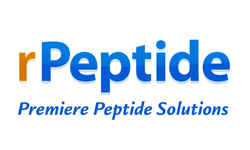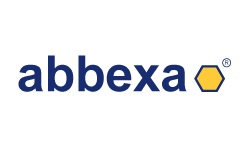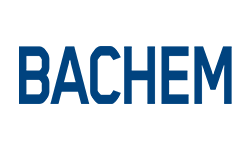Peptides
| Name | Price | |||||||||||||||||
|---|---|---|---|---|---|---|---|---|---|---|---|---|---|---|---|---|---|---|
| WAC Peptide - N-terminal region (AAP59223) | Login | WAC Peptide - N-terminal region (AAP59223) | ||||||||||||||||
|
||||||||||||||||||
| DAXX Peptide - N-terminal region (AAP60159) | Login | DAXX Peptide - N-terminal region (AAP60159) | ||||||||||||||||
|
||||||||||||||||||
| ARVCF Peptide - C-terminal region (AAP60196) | Login | ARVCF Peptide - C-terminal region (AAP60196) | ||||||||||||||||
|
||||||||||||||||||
| VEGFA Peptide - C-terminal region (AAP60980) | Login | VEGFA Peptide - C-terminal region (AAP60980) | ||||||||||||||||
|
||||||||||||||||||
| KATNA1 Peptide - middle region (AAP60455) | Login | KATNA1 Peptide - middle region (AAP60455) | ||||||||||||||||
|
||||||||||||||||||
| IL32 Peptide - middle region (AAP60750) | Login | IL32 Peptide - middle region (AAP60750) | ||||||||||||||||
|
||||||||||||||||||
| CAPN14 Peptide - middle region (AAP60942) | Login | CAPN14 Peptide - middle region (AAP60942) | ||||||||||||||||
|
||||||||||||||||||
| RAD51 Peptide - N-terminal region (AAP31731) | Login | RAD51 Peptide - N-terminal region (AAP31731) | ||||||||||||||||
|
||||||||||||||||||
| PAX6 Peptide - C-terminal region (AAP38063) | Login | PAX6 Peptide - C-terminal region (AAP38063) | ||||||||||||||||
|
||||||||||||||||||
| EXTL2 Peptide - C-terminal region (AAP44809) | Login | EXTL2 Peptide - C-terminal region (AAP44809) | ||||||||||||||||
|
||||||||||||||||||
| SERPINA9 Peptide - C-terminal region (AAP59230) | Login | SERPINA9 Peptide - C-terminal region (AAP59230) | ||||||||||||||||
|
||||||||||||||||||
| COPS6 Peptide - C-terminal region (AAP59349) | Login | COPS6 Peptide - C-terminal region (AAP59349) | ||||||||||||||||
|
||||||||||||||||||
| PLP (139 - 151) mutant 140S | Login | PLP (139 - 151) mutant 140S | ||||||||||||||||
|
||||||||||||||||||
| PLP (180 - 199) | Login | PLP (180 - 199) | ||||||||||||||||
|
||||||||||||||||||
| EBNA-1 Protein (562-570) | Login | EBNA-1 Protein (562-570) | ||||||||||||||||
|
||||||||||||||||||
| Melan A 27-35 | Login | Melan A 27-35 | ||||||||||||||||
|
||||||||||||||||||
| PLP (139 - 151) mutant 140S | Login | PLP (139 - 151) mutant 140S | ||||||||||||||||
|
||||||||||||||||||
| PLP (180 - 199) | Login | PLP (180 - 199) | ||||||||||||||||
|
||||||||||||||||||
| SLCO2B1 Peptide - C-terminal region (AAP43927) | Login | SLCO2B1 Peptide - C-terminal region (AAP43927) | ||||||||||||||||
|
||||||||||||||||||
| SLC35C1 Peptide - C-terminal region (AAP43990) | Login | SLC35C1 Peptide - C-terminal region (AAP43990) | ||||||||||||||||
|
||||||||||||||||||
| E2F8 Peptide - C-terminal region (AAP73834) | Login | E2F8 Peptide - C-terminal region (AAP73834) | ||||||||||||||||
|
||||||||||||||||||
| ATG16L2 Peptide - middle region (AAP59067) | Login | ATG16L2 Peptide - middle region (AAP59067) | ||||||||||||||||
|
||||||||||||||||||
| C3AR1 Peptide - C-terminal region (AAP60073) | Login | C3AR1 Peptide - C-terminal region (AAP60073) | ||||||||||||||||
|
||||||||||||||||||
| LL - 37 | Login | LL - 37 | ||||||||||||||||
|
||||||||||||||||||
| LL - 37 | Login | LL - 37 | ||||||||||||||||
|
||||||||||||||||||
Peptides:
By peptide bonds linked amino acids (AS) are referred to as peptides. 21 of these amino acids are found in the human body. Of these amino acids, eight are essential. They have to be supplied to the body by means of food, since they cannot be produced by the body. If the amino acids of this organic compound are arranged linearly in a defined sequence, then one speaks of a protein (> 50 AS). Circular peptide chains are again called cyclopeptides. In addition to differentiating the different molar masses of the peptides, they can also be prepared in dipeptide (2 aa), tripeptide (3 aa), tetrapeptide (4 aa), pentapeptide (5 aa), oligopeptide (<10 aa), polypeptide (> 10 aa) and macropeptide (> 100 aa). If a protein additionally has glycosylation, it is called glycopeptide or glycoprotein. If it also has lipids, the term lipopeptide or lipoprotein is used.
The synthesis of peptides from α-amino acids of the L-form is called translation (second part of protein biosynthesis). This process takes place on the cellular ribosomes and requires the help of amino acid-transporting tRNAs. In chemistry, the reaction of the carboxy group of one amino acid with the amino group of the other amino acid, with elimination of water, is referred to as condensation. This results in an amide bond between the two amino acids, which is referred to as peptide bond. The two ends of a peptide chain are described according to the nitrogen atom of the amino group as N-terminus and corresponding to the carbon atom of the carboxy group as C-terminus. For the formation of a protein, however, protein folding is still necessary, which requires hydrogen and disulfide bridges.
In addition, the amino acids of a polypeptide chain can be chemically modified, for example, by phosphorylation, acetylation and methylation or different isotopes for the amino acids. In addition, specific tags can be conjugated to the peptide chains (e.g., biotin). These then help with purification or detection or they can affect the cellular localization of the peptide. Instead, fluorescence markers, quenchers and chromogens can be used.
In the search for a specific peptide, Hölzel Diagnostika offers a broad portfolio of conjugated and synthetic peptides, native or recombinant peptides, labeled and unlabeled peptides and blocking peptides. In addition, we provide you with important information about the sequence, function and domains of the peptides. If you require further information, you are welcome to use our customer service. This is available to you by phone, email or chat.











